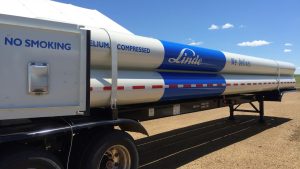An updated map by Newsweek shows that residents in southern California counties can expect substantial water bill rate hikes in the near future. The San Dieguito Water District Board approved an increase that will take effect over the next three years, following the Metropolitan Water District of Southern California (MWD) passing a budget with rate and property tax increases for customers over the next two years. The MWD attributes the increase to years of drought in California, revenue declines due to conservation efforts, and the need to source water from more expensive options like the MWD, as seen in Encinitas where a failing dam limits water capacity at Lake Hodges Reservoir necessitating the use of pricier alternatives.
For customers of the MWD, water rates are set to increase by 8.5 percent in 2025 and another 8.5 percent in 2026, impacting the 26 public water agencies served by the district. The MWD’s budget also includes a doubling of property tax assessments. Some member agencies receive all their water from the MWD, so the rate increase will directly affect their consumers. However, other agencies source water from different suppliers, with rates likely to be affected differently. Consumers can reduce their bills by using less water, even with rate increases, as reduced usage will result in lower bills compared to if usage remained high. The San Dieguito Water District Board was reached out to for comment but did not respond.
In Encinitas, some businesses like Jolly Clean Giant Laundry are already facing high water bills costing between $2,300 and $3,200 monthly. Manager Jerry Johnson fears that the increased rates may have to be passed on to the company’s low-income customers. The impending spike in water bills will add thousands of dollars to Johnson’s costs over the year. The situation in Encinitas highlights the challenges faced by businesses and consumers when dealing with significant water rate increases, impacting their operational costs and potentially affecting their customers.
While the MWD’s rate increase may be necessary due to various factors like drought and sourcing from expensive alternatives, it puts a financial strain on many residents and businesses in southern California. The additional costs incurred by consumers can have a ripple effect on the local economy, leading to potential price increases for goods and services as businesses attempt to offset rising expenses. This highlights the interconnected nature of water management, conservation efforts, and the financial implications for water consumers in the region.
The rise in water bills for residents and businesses in the southern California counties comes at a time when water scarcity and drought conditions are major concerns in the state. The need to balance water conservation efforts with the financial burden on consumers becomes increasingly challenging as water rates continue to escalate. Finding ways to mitigate the impact of water rate increases, whether through increased efficiency measures or alternative water sources, will be crucial for residents and businesses to navigate the evolving landscape of water management in California.
As communities in southern California grapple with the impending water bill increases, the role of government agencies, water districts, and consumers in managing water resources responsibly becomes more crucial. Collaboration between stakeholders to find sustainable solutions to address water scarcity, infrastructure challenges, and affordability issues will be key in ensuring access to clean and affordable water for all residents. The ongoing dialogue and action around water rate hikes underscore the complex and interdependent nature of water management in a region facing increasing environmental challenges and changing climate patterns.















